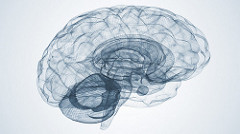I was watching the movie, “The Notebook” with my aunt last weekend. For those of you who aren’t familiar with the movie, it’s tells about an elderly man sharing a beautiful story with his wife, who is battling the Alzheimer’s disease, of how they met and fell in love.
In one scene, it brought up another neurological condition that is associated with Alzheimer’s and certain forms of dementia. This one is called sundowning. Sundowning is defined as a neurological phenomenon associated with increased confusion and restlessness in patients with delirium or some form of dementia. Patients with this conditio

n experience a myriad of behavioral problems in the evening or when the sun starts to set.
According to Wikipedia, some of the symptoms include increased general confusion as natural light begins to fade, mental and physical fatigue and restlessness while trying to sleep. While its specific causes haven’t been proven, some evidence point to circadian rhythm and their disruption increases as being a cause. Circadian rhythm is defined as any biological process that displays an endogenous, entrainable oscillation of about 24 hours. In individuals with dementia, melatonin production may be decreased, which may interrupt other neurotransmitter systems. Wikipedia also brings out that another cause can be oral problems, like tooth decay with pain.
A few treatment options include a consistent sleeping schedule and a comfortable daily routine. This could reduce confusion and agitation for the sufferer. Another suggestion is for caregivers to try letting the patient choose their own sleeping arrangements each night, wherever they feel comfortable sleeping. You could also turn on a dim light in the room to alleviate confusion associated with an unfamiliar place. By following these suggestions and being there for the patient as best as you can, you will be helping them in the fight against these neurological conditions. For more information on sundowning, visit www.wikipedia.org.

